There are literally thousands of rifles to choose from, yet as an American (which anyone must also be in order to be truly cool) your choice may very well boil down to AR10 vs AR15. So slick back your hair, pop up your kickstand, and get ready to ride toward a riveting explanation of the similarities and differences between the two.
AR-10 vs AR-15
AR-10 rifles are typically equipped to handle larger calibers than AR-15 rifles. As a result, AR-10’s are typically more powerful and deliver more energy downrange. This makes them a better choice for larger North American game. Keep in mind, AR-10 rifles deliver more recoil than AR-15s as a result of that power. So, keeping on target in successive shots may be more difficult for you as the shooter.
AR-15 rifles generally come equipped with magazines that hold more 223/5.56 ammo (30-40 rounds) than the larger-caliber AR-10, where a 10-round magazine is fairly standard. So, if you are looking for a self-defense rifle you may opt for the smaller AR-15.
Similarities Between the AR-10 and AR-15
As they were both designed by ArmaLite, and the AR-15 is itself a scaled down version of the AR-10, the two rifles are actually remarkably similar in terms of how they operate. Both semi-autos implement a direct impingement gas system, where gas from a fired cartridge provides the force to cycle the firearm and load the next round into the chamber. Both have a rotating bolt to lock their breeches shut during ignition. They also share the same trigger group, are fed via detachable box magazines, and feature several interchangeable parts. So what’s the primary difference between the AR-10 and the AR-15?
The ammo.
7.62×51 vs. 5.56×45

Larger .308 rounds used by many AR-10 rifles (left) next to smaller 223 Remington rounds (right) used commonly in AR-15s.
The fundamental difference between the AR-10 and the AR-15 is the ammunition they were designed to fire. The AR-10 was originally chambered for 7.62×51 (which is practically the same as 308 Win ammo); the AR-15 was originally chambered for 5.56×45 (which means it can also fire identically sized 223 Rem).
While the AR-10 is currently also available chambered for other cartridges including 6.5 Creedmoor and 243 Win, and AR-15 rifles are available chambered for rounds like 300 AAC Blackout and 224 Valkyrie, they are still most commonly chambered for 7.62 and 5.56, respectively.
Whether you should prefer an AR-10 or an AR-15 depends enormously on which type of ammo you want to fire. Let’s compare the two rifles’ most common cartridges so you can decide which is better for you.
AR-10 vs AR-15 Specs & Development
| 7.62x51 | 5.56x45 | |
|---|---|---|
| Parent case | T-65 | 223 Rem |
| Case type | Rimless, bottleneck | Rimless, bottleneck |
| Bullet diameter | 0.308 in | 0.224 in |
| Neck diameter | 0.345 in | 0.253 in |
| Shoulder diameter | 0.454 in | 0.354 in |
| Base diameter | 0.470 in | 0.377 in |
| Rim diameter | 0.473 in | 0.378 in |
| Rim thickness | 0.050 in | 0.045 in |
| Case length | 2.015 in | 1.760 in |
| Overall length | 2.800 in | 2.260 in |
| Case capacity | 52.0 gr H2O | 28.5 gr H2O |
| Maximum pressure | 60,191 psi | 62,366 psi |
Even a layman can appreciate a few key differences between the 7.62 and 5.56 by looking at the cartridges’ dimensions. First of all, the 7.62’s bullet is significantly wider in diameter at 0.308” versus the 5.56 at 0.224”. That not only affects how efficiently either bullet can overcome air resistance in flight, but also means the 7.62 gets to have a significantly heavier bullet.
A heavier bullet needs greater energy to move at the same velocity as a lighter one. And here you can see the other most important difference between the two rounds: The 7.62 has nearly twice as much case capacity as the 5.56. That lets it store more of the propellant its heavier bullet needs to accelerate, and quite naturally makes the whole cartridge much larger overall. One 7.62 cartridge weighs approximately 25 grams; a 5.56 weighs about 11.5 grams.
AR10 vs. AR15: Ballistics
It is difficult to do a real apples-to-apples comparison of the ballistic performance of two cartridges, simply because a single type of cartridge offers so much variety. The 5.56, for example, is commonly available with a 55, 62, or 77 grain bullet, and each one offers dramatically different performance. A cartridge’s actual muzzle velocity depends heavily on the characteristics of the rifle – particularly the length of its barrel. Different manufacturers can also load their ammo to different specs so that no two rounds perform identically to one another!
To keep things simple we’re only going to compare the two most common representatives of the 7.62 and the 5.56: the U.S. Military’s ball M80 and ball M193, respectively. We haven’t calculated ballistic data to live and die by, but rather to give you a sense of the comparative performance of the two rounds.
| 7.62x51 - M80 (147gr FMJ) | 5.56x45 - M193 (55gr FMJ) | |
|---|---|---|
| Muzzle velocity (fps) | 2800 | 3250 |
| Velocity @ 100 yds | 2570 | 2845 |
| Velocity @ 200 yds | 2352 | 2476 |
| Velocity @ 300 yds | 2144 | 2136 |
| Velocity @ 400 yds | 1947 | 1824 |
| Velocity @ 500 yds | 1762 | 1546 |
| Velocity @ 600 yds | 1590 | 1310 |
| Velocity @ 700 yds | 1434 | 1133 |
| Velocity @ 800 yds | 1297 | 1019 |
| Velocity @ 900 yds | 1182 | 941 |
| Velocity @ 1000 yds | 1093 | 880 |
| Ballistic coefficient | 0.393 | 0.243 |
Notice how the 7.62 has a higher ballistic coefficient? Although its wider diameter bullet meets with more air resistance in flight, its greater mass grants it far superior momentum and immunity to wind drift. For this reason the 7.62 retains 84 percent of its original velocity at 200 yards, whereas the 5.56 retains only 76 percent.
Of course, the 5.56’s faster initial velocity means it gives gravity less time to affect it up until about 300 yards. It therefore offers a flatter trajectory as its bullet drops less than the 7.62 over that distance. Yet as the 5.56’s lower ballistic coefficient causes its velocity to wane more rapidly downrange, it begins to drop faster than the 7.62.
Trajectory Comparison
| AR-10 | AR-15 | |
|---|---|---|
| Elevation @ 100 yds | 1.9 | 1.42 |
| Elevation @ 200 yds | 0.02 | 0.01 |
| Elevation @ 300 yds | -8.17 | -7.13 |
| Elevation @ 400 yds | -23.96 | -21.95 |
| Elevation @ 500 yds | -48.95 | -47.34 |
| Elevation @ 600 yds | -85.19 | -87.42 |
| Elevation @ 700 yds | -135.22 | -147.84 |
| Elevation @ 800 yds | -202.21 | -235.27 |
| Elevation @ 900 yds | -289.9 | -356.36 |
| Elevation @ 1000 yds | -402.65 | -516.5 |
Shooters do typically find it easier to aim when they have less bullet drop to take into account. Still, we would hesitate to say the 5.56 is more accurate than the 7.62 at close range, as accuracy heavily depends on the shooter’s skill. More importantly, the 5.56 ceases to be effective past around 250 yards. The 7.62 is effective up to around 800 yards, making it vastly preferable for long distance shooting!
Energy
How much energy a bullet can transfer to its target depends entirely on its weight and velocity. Even though the 5.56 has the velocity advantage at first, the nearly three times heavier 7.62 always beats it in terms of pure energy. At close range the 7.62 delivers nearly twice as much punch to its target!
| Muzzle energy (ft lbs) | 2559 | 1290 |
|---|---|---|
| Energy @ 100 yds | 2156 | 989 |
| Energy @ 200 yds | 1805 | 749 |
| Energy @ 300 yds | 1500 | 557 |
| Energy @ 400 yds | 1237 | 406 |
| Energy @ 500 yds | 1013 | 292 |
| Energy @ 600 yds | 826 | 210 |
| Energy @ 700 yds | 672 | 157 |
| Energy @ 800 yds | 549 | 127 |
| Energy @ 900 yds | 456 | 108 |
| Energy @ 1000 yds | 390 | 95 |
Bear in mind that a bullet’s actual stopping power also takes into account its ability to penetrate and expand, but there’s nothing a 5.56 can do to catch up to the 7.62 in terms of sheer destructive potential. There’s good reason far more deer hunters prefer 308 over 223.
Recoil
Four factors determine how much recoil a cartridge will generate: bullet weight, propellant weight, firearm weight, and muzzle velocity. To compare each round’s recoil energy, let’s say we’re firing either out of an eight pound rifle (although AR-10s do tend to weigh about two pounds heavier on average). For simplicity’s sake let’s also say the 7.62 has 40 grains of propellant and the 5.56 has 20 grains. With that we can estimate the 7.62’s recoil energy at 14.83 ft lbs, and the 5.56’s at 3.08 ft lbs.
How much recoil you actually perceive while firing either round is bound to be subjective. That said, it’s plain to see that firing the 5.56 is far more comfortable. The 1909 edition of the British Textbook of Small Arms says a military rifle’s recoil shouldn’t exceed 15 ft lbs, so the 7.62 is cutting it awfully close. Less recoil also means less muzzle rise after firing a shot, making it far easier to line up a follow-up shot with the 5.56. That’s important for self-defense where rapid, accurate fire is so crucial.
AR-10 vs AR-15 Ammo Cost
No brainer here – the smaller 5.56 is significantly cheaper than the 7.62. This reflects how much less copper and lead the manufacturer has to invest into producing AR-15 ammo, as well as shipping costs. If high volume shooting is your thing, the 223 is the clear frontrunner in the AR-10 vs. AR-15 debate.
Why Should You Choose an AR-10?
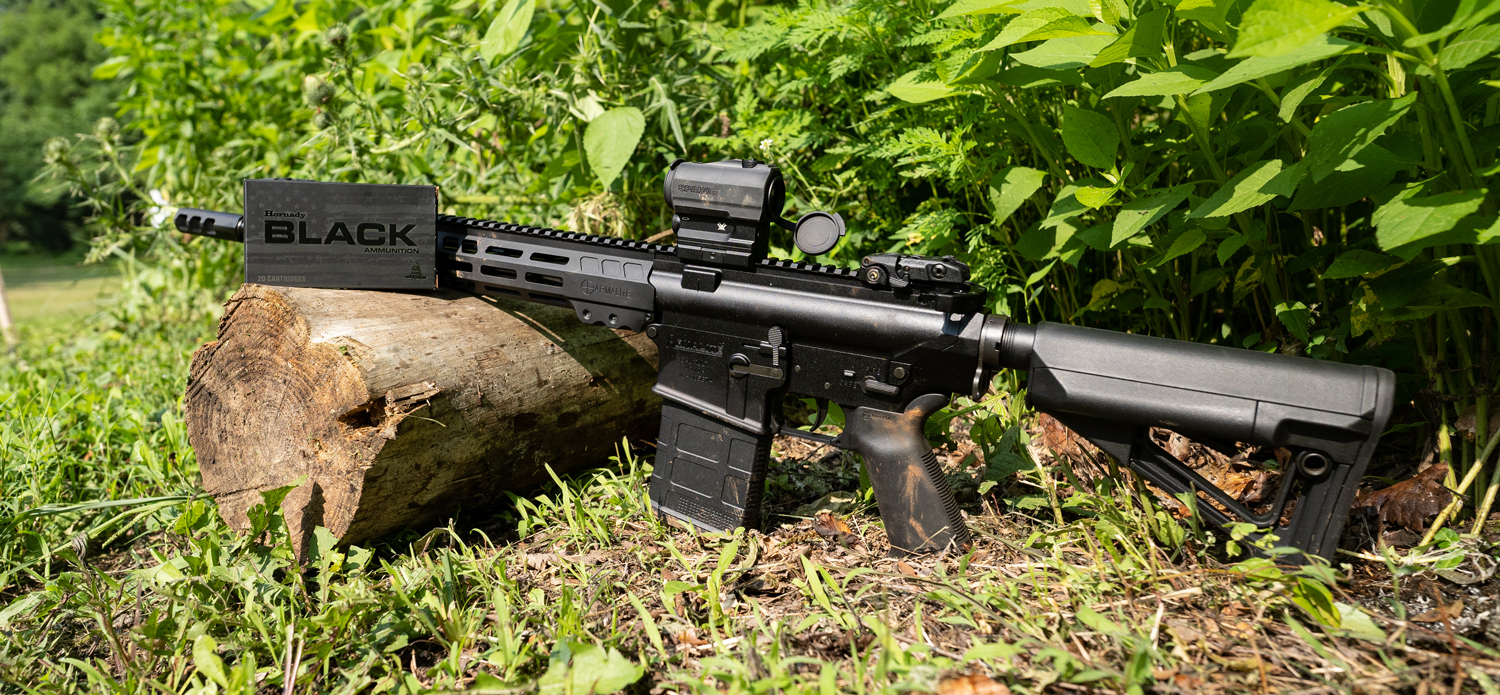
As mentioned above, the AR-10 is truly preferable for long-distance shooting. While we’re certain there are plenty of people out there with eagles, globes and anchors tattooed on their biceps who can peg thousand yard targets with a 5.56 like no one’s business, odds are you’re not one of them.
The AR-10 is also far, far more powerful. Now, the important thing to bear in mind here is that an AR-15 is still staggeringly powerful over the distances you’re probably going to have to cover for home defense or personal protection. Threats to your safety rarely occur farther than 300 yards away. An AR-15 can put over three times the minimum amount of energy recommended for self-defense in a target at 100 yards.
The AR-10 is thus more of a hunter’s rifle. A minimum of 1,000 ft lbs of force are recommended for ethical whitetail hunting. That’s power the AR-10 delivers at 500 yards in contrast to the AR-15 at nearly 100 yards. Its far greater range also suits the AR-10 better for getting the drop on perceptive game animals.
Why Choose an AR-15?

The AR-15’s enormous popularity is no freak occurrence. Its low recoil, awesome ballistic performance over zero to 300 yards, and commanding power make it an exceptional choice for personal protection. Nowadays most rifles are probably used for recreational shooting and home defense rather than hunting.
What’s more, the AR-15’s popularity means its parts and ammo are both highly available. Next to 9mm, 5.56 and its brother 223 are the most frequently purchased ammo in the U.S. Not to say finding 7.62/308 is especially difficult. It’s likely you’ll find a far wider selection of 5.56/223 for every conceivable application, including self-defense.
And there you have it. If you’re sniping or hunting, get an AR-10. If you want a utility rifle for fun at the range and personal protection, then become one of tens of millions of American AR-15 owners.

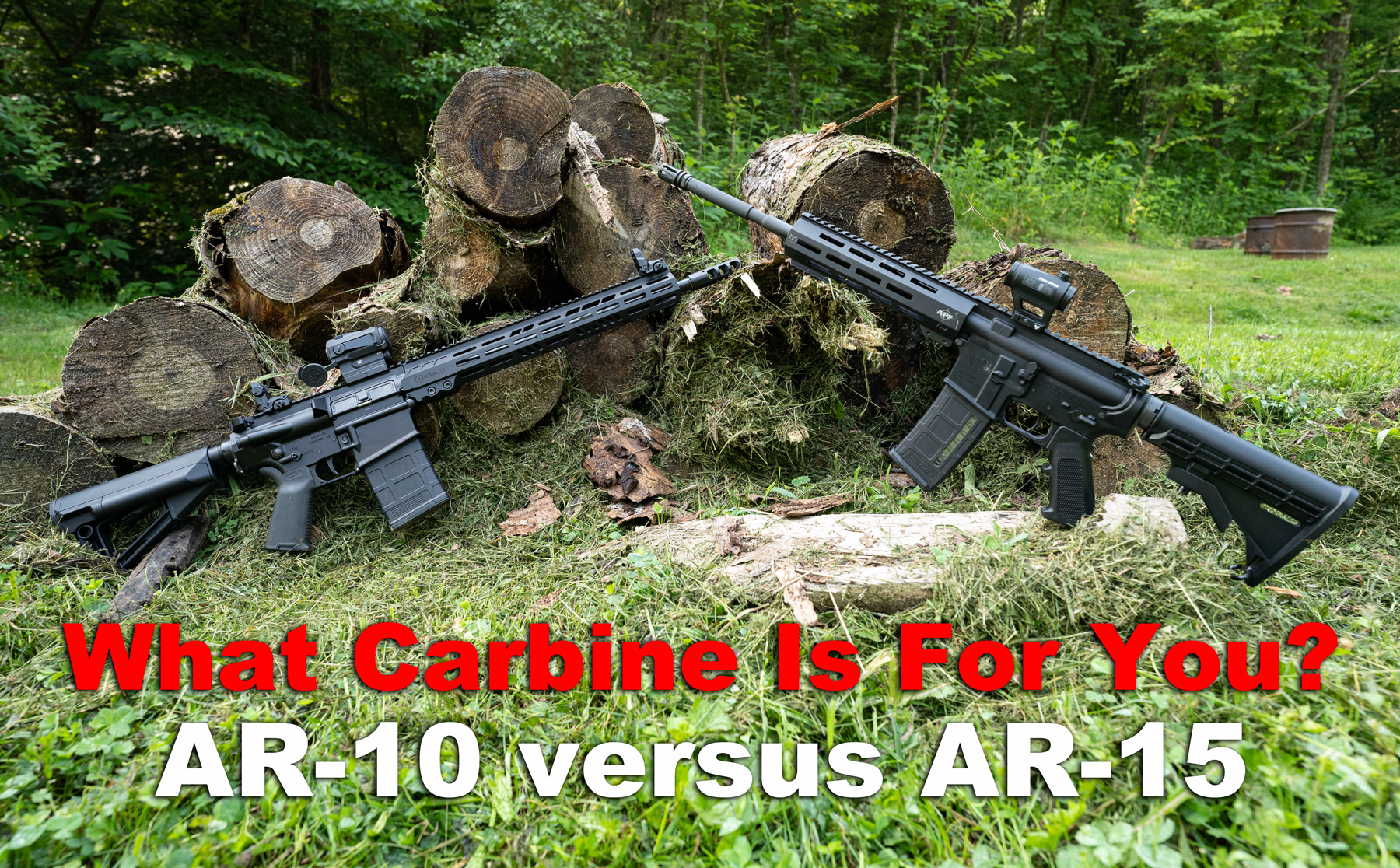
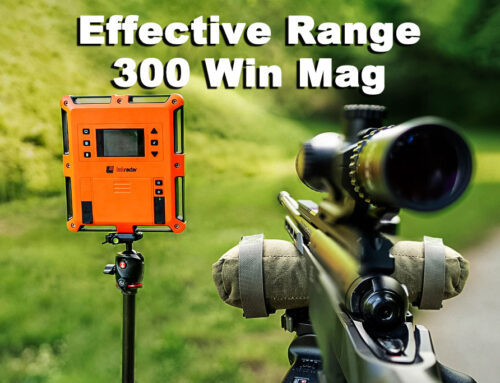
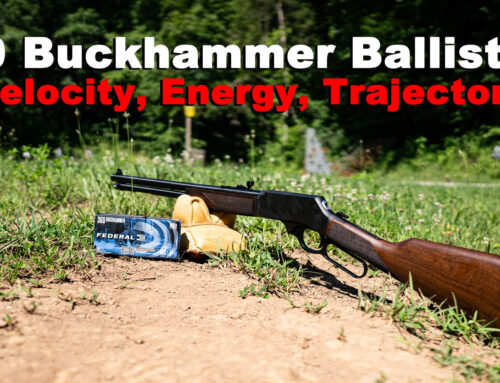
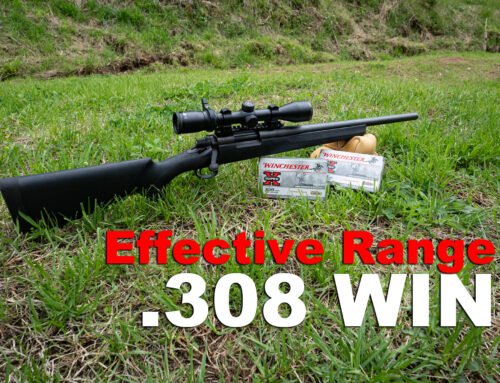
Leave A Comment